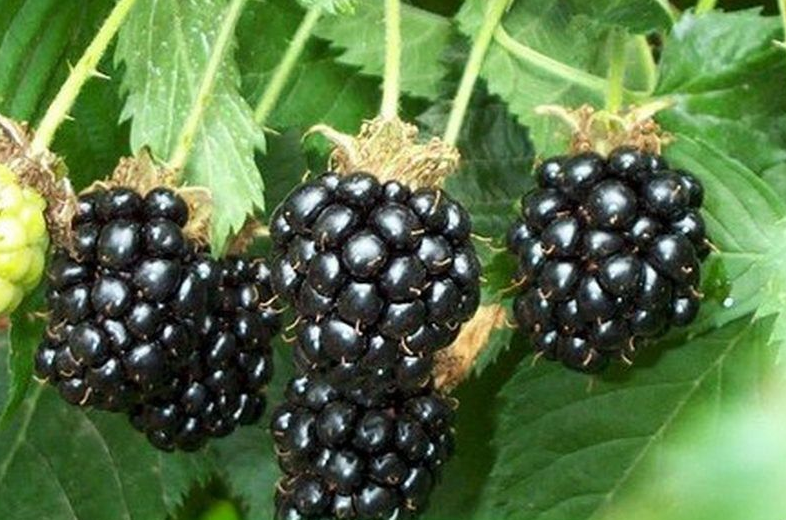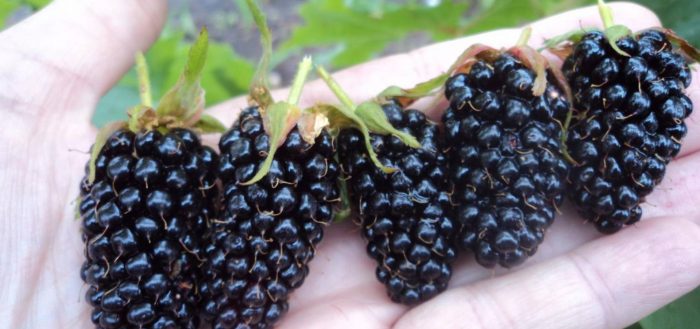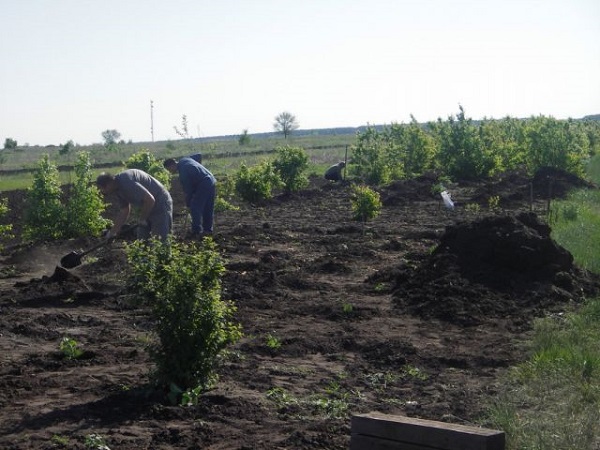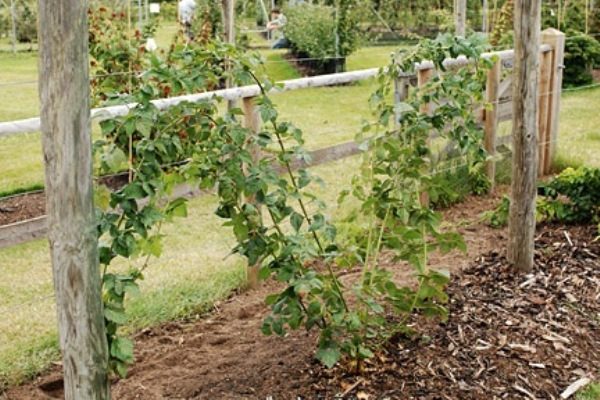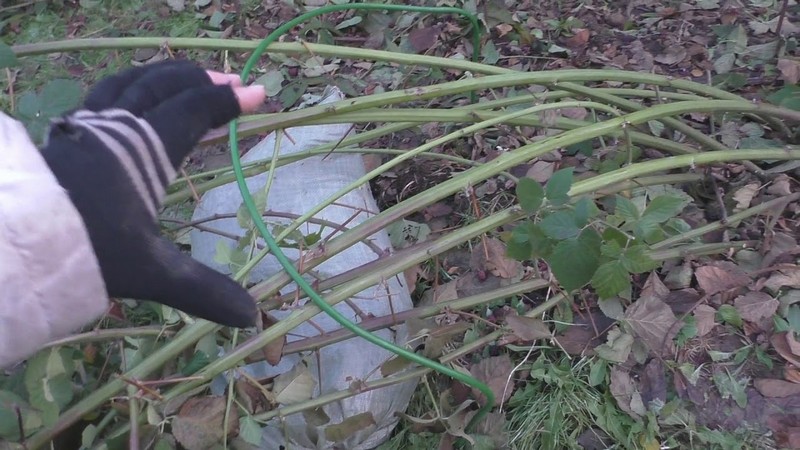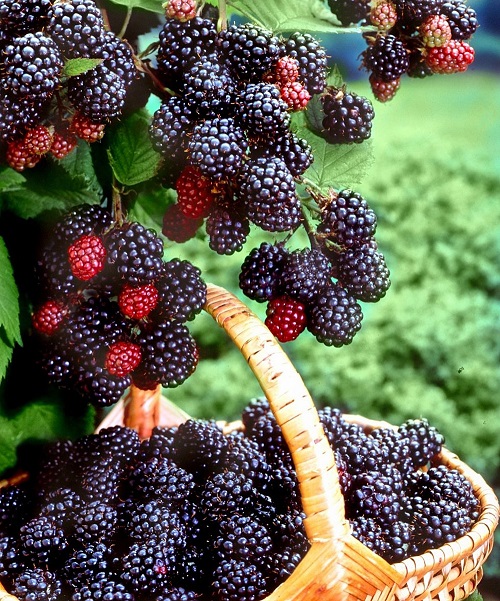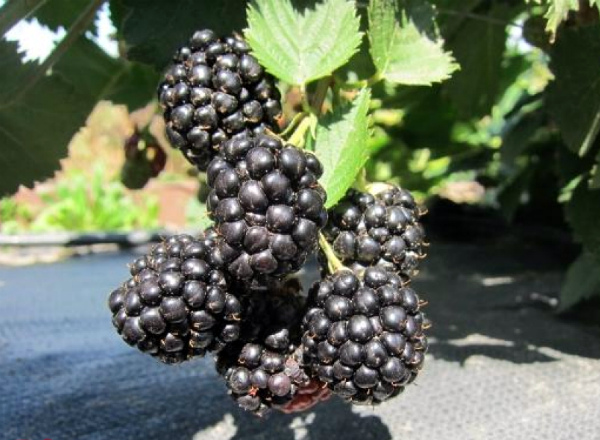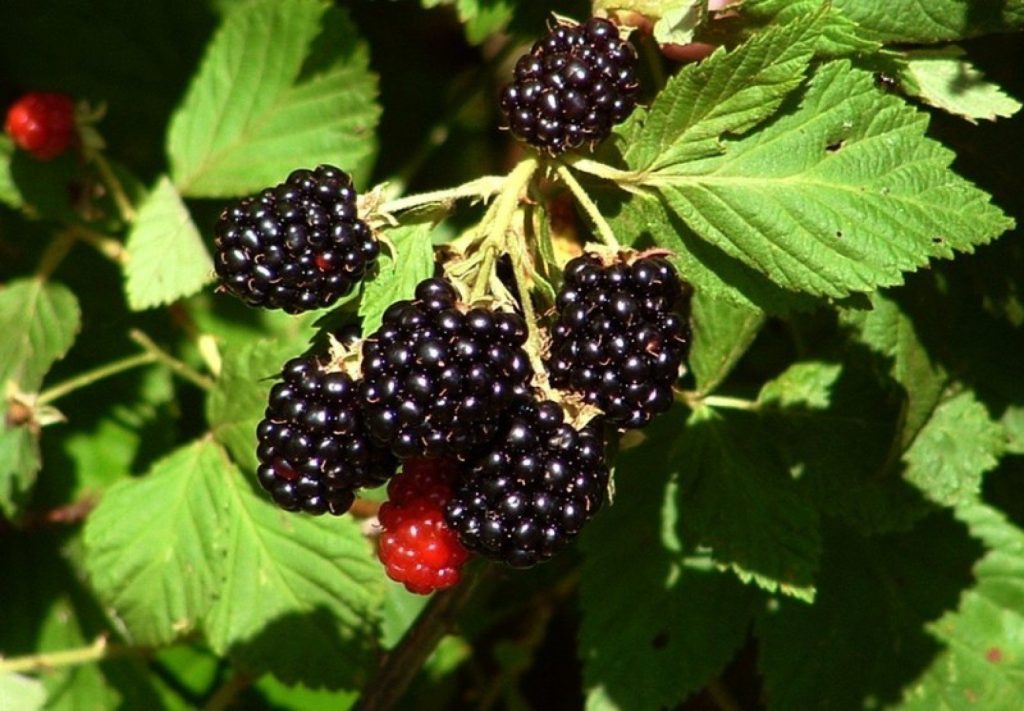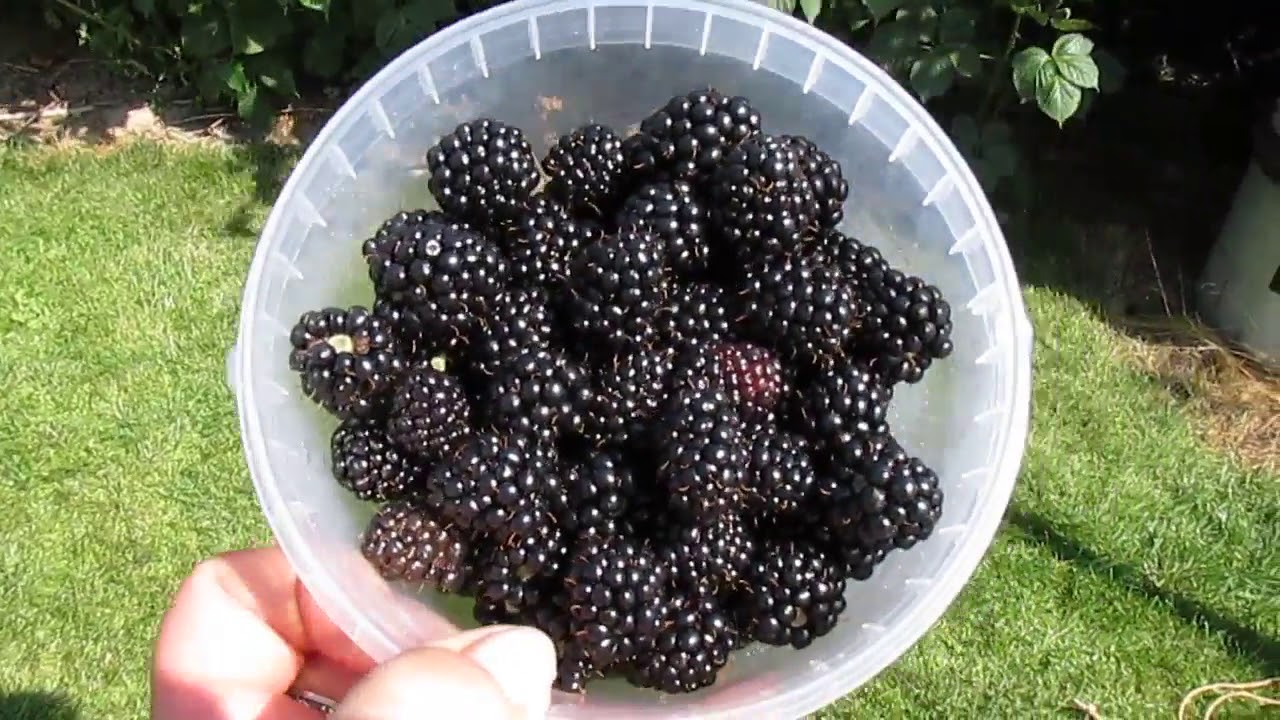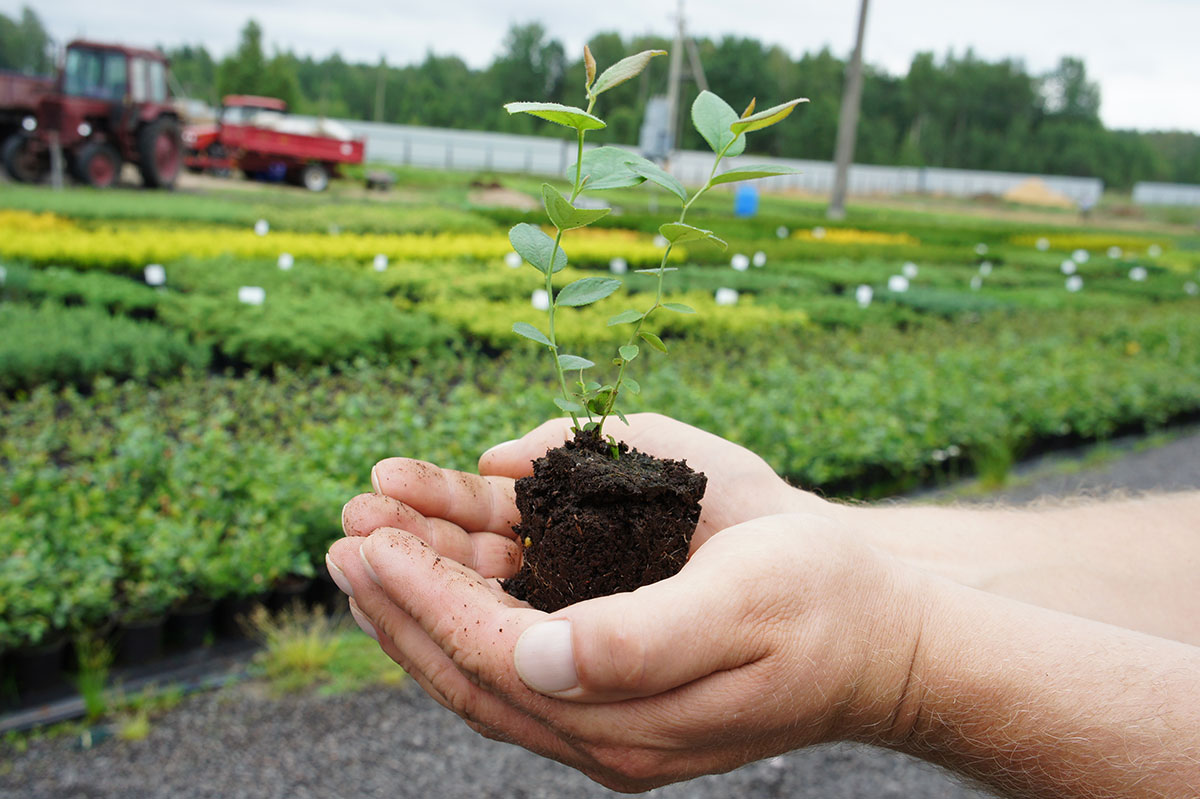Content:
In a close relative of raspberries, ripe fruits become deep black. The varieties of berries differ in taste and aroma. Both crops are attractive to gardeners. The Thornfrey blackberry has been popular for more than half a century, and in Siberia it is considered one of the most promising for this region.
Description of the blackberry variety
The variety belongs to sundews, which are characterized by a semi-creeping arrangement of shoots. The bush covered with large pinkish flowers becomes a real decoration of the summer garden (this moment falls on the month of June).
Depending on the weather, climatic conditions and the place of planting, some gardeners begin to feast on berries in mid-August, while others have to wait for September.
The description of the variety will tell you how good the Thornfrey blackberry is:
- the stem of the shoot is powerful enough, faceted at the base, 3 cm thick;
- stems can grow up to 6 m in length;
- during the growing season, the color of young shoots changes: in spring - dark green branches, by autumn they become bluish;
- interesting is the shape of the leaf, which is a complex structure of 3-5 small leaves.
Blackberry Tonfrey is a thornless medium black bush, worthy of growing it in a summer cottage, not only for tasting. With its presence, the berry will transform the landscape, making it more attractive throughout the growing season.
Characteristics of berries: advantages and disadvantages
Blackberries are collected in clusters of 30-60 pieces. During the harvesting season, the shoots simply cannot withstand such a load and sag to the very ground. Each garden berry weighs on average 5-7 g, and with good agricultural technology, you can take up to 20 kg of fruit from a bush.
Conical black shiny blackberries at the time of ripening acquire a pleasant sweet and sour taste. But if you overexpose the berry, the sourness leaves, and the relish becomes sugary-sugary, and the pulp softens. This characteristic does not affect the popularity of the Toffee blackberry, since it has a lot of advantages.
Pros of the variety:
- shoots are completely devoid of thorns, which already makes the variety attractive;
- the culture is unpretentious and ready to produce super crops in any conditions;
- growing a berry plant does not require the treatment of bushes with chemicals, since this variety is resistant to many diseases and pests;
- if the fruits are not overripe, then we can talk about good transportability.
Inexperienced gardeners consider the degree of maturity of the Thornphy blackberry a disadvantage - it is very difficult to grasp the moment when it reaches the desired condition. The thing is that blackberry has the same shade throughout the entire ripening period. But experienced farmers have already learned to distinguish subtle nuances in the appearance of fruits.
Considering varietal characteristics, one should focus on frost resistance - it is average for Thornfrey (up to -18 degrees). In southern regions with warm winters, the bushes may not be covered, but in other areas, a serious shelter will be needed.
Planting seedlings and care in the fall
The planting method, site selection, growing and caring for these shrubs are almost the same as for raspberries. Topfree blackberries are unpretentious in terms of soil, although they develop poorly on sandstones.If planting is carried out on too acidic soil, preliming is required.
The best choice would be fertile loams in open, sunny places in cool regions and with light shading in the southern edges. The latter condition is necessary, since the berry is baked under the hot sun.
Site preparation
Container-grown blackberries can be planted throughout the season. Sprouts with an open root system take root better in spring. If a plantation will be laid, then it is worth choosing a trench method. The width and depth of the ditch are the same, they are maintained about half a meter.
The cultivation of the site is carried out in advance, since the fall. At the bottom of the dug trench, compost or rotted manure is laid in a layer of 10 cm. The ditch is filled with earth mixed with complex fertilizers. During the winter, the soil will settle, and in the spring the trench will be ready to receive the seedlings.
Landing
When planting bushes, it should be borne in mind that the shoots of thornfree blackberries are powerful and long. Therefore, a distance of about 3-4.5 m is maintained between the plants. The seedlings are installed in the center of the trench, not forgetting to straighten the roots, and sprinkle with earth so as to slightly cover the root collar.
It is necessary to tamp the soil around the bush manually so as not to damage the rhizomes located close to the surface. Then the shoots are trimmed to 25 cm, and the earth around is mulched with sawdust, peat or compost. After a few days, the planting is watered abundantly.
Conditions for reproduction and cultivation
Caring for this variety of blackberries is quite standard - regular feeding, loosening the soil, watering. Irrigation is carried out as needed, but it is important during the period of budding and ovary formation. By the fall, the amount of water is limited to give the bushes the opportunity to lignify.
The main fertilizer laid in the trenches before planting is enough for the bushes for 2-3 years. In June, during the flowering of blackberries, it is recommended to water the plants with infusions of chicken or cow dung. On poorly fertile soils, mulching is carried out in the fall, alternating organic and mineral water after a year.
Formation of bushes
The main feature of care for sundews is the formation of bushes. So that the fruits on the creeping shoots do not overheat and receive enough ultraviolet radiation, a trellis will be required. Thornfrey besshornaya blackberry is a remontant variety; for more convenient harvesting, it is recommended to plant the shoots to the sides when tying a bush, acting according to the following principle:
- young branches of the first year should be tied to the right stake;
- the next year, new stems are already tied up closer to the left support;
- in the third year, in place of the cut biennial branches in the summer, fresh shoots are tied.
This separation makes it easier to care for the bushes and harvest.
The formation of plants is carried out with the help of pruning. After the opening of the bushes in the spring, the frozen and diseased stems are removed, and the second years are also slightly shortened - then the berries will be tied on the lower lateral branches. In the fall, the shoots that have spawned last year must be cut off at the root.
Reproduction
Thorn fries seedlings are grown from apical cuttings, which are obtained during spring pruning of two-year shoots. They easily take root in pots with peat mixture and then, together with an earthen clod, are planted on the site.
Some gardeners form new shrubs by adding green tops. When rooting occurs, the side bushes are cut off from the main shoot.
Diseases and pests
An important characteristic of Thornfrey is resistance to diseases such as stem cancer, rust and anthracnose. But serious violations of agricultural technology can provoke their development.
When even the slightest signs of the disease appear, it is recommended to cut and destroy the affected shoots, because chemicals cannot save the crop anyway.
If the blackberry is adjacent to a raspberry tree, one should expect an infection with a green mosaic, to which this variety has no resistance. Therefore, from time to time you will have to treat the bushes with biofungicides.
The plantation is sometimes visited by the blackberry gall mite. It is his fault that the berries stop ripening. The bushes will have to be treated twice a year with feverfew or garlic infusion. In autumn, this work is performed after cutting out old stems, in spring - as soon as the shelters are removed.
Preparing for winter
Weak frost resistance of the variety implies shelter for the winter. But it will be difficult to do this because of the power of the shoots. In the southern regions, summer residents sometimes leave branches on the trellis, covering the berry with agrofibre. In cooler areas, this option is not suitable, as it is important to take care of protecting the base of the bushes.
Experienced farmers solve the problem using shaping. It consists in the spring pinching of the shoots, which provokes the development of lateral, more flexible branches. Before the onset of frost, the bushes are watered, the whips are removed from the support and laid on the ground.
Some summer residents use the one-sided digging method to lay the entire bush to one side. Then it is well covered with lutrasil or spandbond. In anticipation of severe frosts, it is recommended to sprinkle the bushes with dry foliage or cover with cardboard, on top of which you can also lay spruce branches.
Some of the shortcomings of the variety are compensated by large yields. Therefore, the cultivation of Thornfree is put on an industrial stream. But amateur gardeners do not miss the opportunity to breed decorative and nutritious blackberries.
